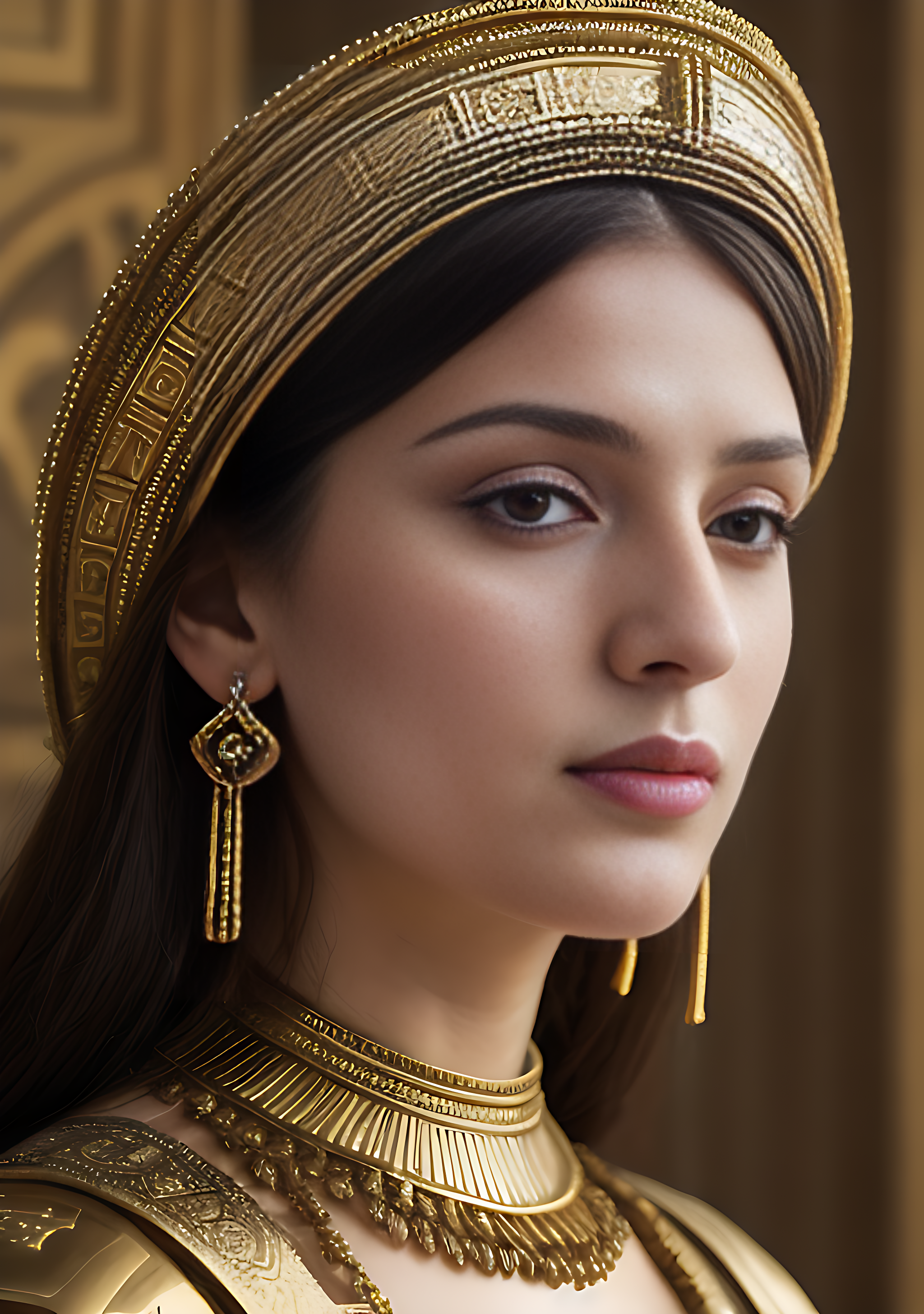gfpgan
Maintainer: tencentarc

72.6K

| Property | Value |
|---|---|
| Model Link | View on Replicate |
| API Spec | View on Replicate |
| Github Link | View on Github |
| Paper Link | View on Arxiv |
Model overview
gfpgan is a practical face restoration algorithm developed by the Tencent ARC team. It leverages the rich and diverse priors encapsulated in a pre-trained face GAN (such as StyleGAN2) to perform blind face restoration on old photos or AI-generated faces. This approach contrasts with similar models like Real-ESRGAN, which focuses on general image restoration, or PyTorch-AnimeGAN, which specializes in anime-style photo animation.
Model inputs and outputs
gfpgan takes an input image and rescales it by a specified factor, typically 2x. The model can handle a variety of face images, from low-quality old photos to high-quality AI-generated faces.
Inputs
- Img: The input image to be restored
- Scale: The factor by which to rescale the output image (default is 2)
- Version: The
gfpganmodel version to use (v1.3 for better quality, v1.4 for more details and better identity)
Outputs
- Output: The restored face image
Capabilities
gfpgan can effectively restore a wide range of face images, from old, low-quality photos to high-quality AI-generated faces. It is able to recover fine details, fix blemishes, and enhance the overall appearance of the face while preserving the original identity.
What can I use it for?
You can use gfpgan to restore old family photos, enhance AI-generated portraits, or breathe new life into low-quality images of faces. The model's capabilities make it a valuable tool for photographers, digital artists, and anyone looking to improve the quality of their facial images. Additionally, the maintainer tencentarc offers an online demo on Replicate, allowing you to try the model without setting up the local environment.
Things to try
Experiment with different input images, varying the scale and version parameters, to see how gfpgan can transform low-quality or damaged face images into high-quality, detailed portraits. You can also try combining gfpgan with other models like Real-ESRGAN to enhance the background and non-facial regions of the image.
Get summaries of the top AI models delivered straight to your inbox:
Related Models

gfpgan

5.2K
gfpgan is a practical face restoration algorithm developed by Tencent ARC, aimed at restoring old photos or AI-generated faces. It leverages rich and diverse priors encapsulated in a pretrained face GAN (such as StyleGAN2) for blind face restoration. This approach is contrasted with similar models like Codeformer which also focus on robust face restoration, and upscaler which aims for general image restoration, while ESRGAN specializes in image super-resolution and GPEN focuses on blind face restoration in the wild. Model inputs and outputs gfpgan takes in an image as input and outputs a restored version of that image, with the faces improved in quality and detail. The model supports upscaling the image by a specified factor. Inputs img**: The input image to be restored Outputs Output**: The restored image with improved face quality and detail Capabilities gfpgan can effectively restore old or low-quality photos, as well as faces in AI-generated images. It leverages a pretrained face GAN to inject realistic facial features and details, resulting in natural-looking face restoration. The model can handle a variety of face poses, occlusions, and image degradations. What can I use it for? gfpgan can be used for a range of applications involving face restoration, such as improving old family photos, enhancing AI-generated avatars or characters, and restoring low-quality images from social media. The model's ability to preserve identity and produce natural-looking results makes it suitable for both personal and commercial use cases. Things to try Experiment with different input image qualities and upscaling factors to see how gfpgan handles a variety of restoration scenarios. You can also try combining gfpgan with other models like Real-ESRGAN to enhance the non-face regions of the image for a more comprehensive restoration.
Updated Invalid Date

gfpgan

112.607
The gfpgan model is a practical face restoration algorithm developed by tencentarc for improving the quality of old photos or AI-generated faces. It aims to address common issues in real-world face restoration, such as blurriness, artifacts, and identity distortion. The gfpgan model can be compared to similar face restoration models like codeformer and upscaler, which also target improvements in old photo or AI-generated face restoration. Model inputs and outputs The gfpgan model takes an image as input and outputs a restored, higher-quality version of that image. The model supports various input image formats and can handle a range of face issues, including blurriness, artifacts, and identity distortion. Inputs img**: The input image to be restored Outputs Output**: The restored, higher-quality version of the input image Capabilities The gfpgan model is capable of effectively restoring the quality of old photos or AI-generated faces. It can address common issues such as blurriness, artifacts, and identity distortion, resulting in visually appealing and more accurate face restoration. What can I use it for? The gfpgan model can be useful for a variety of applications that involve face restoration, such as photo editing, enhancing AI-generated images, and improving the visual quality of historical or low-quality images. The model's capabilities can be leveraged by individuals or companies working on projects that require high-quality face restoration. Things to try One interesting thing to try with the gfpgan model is to experiment with different input images, ranging from old photographs to AI-generated faces, and observe the model's ability to restore the quality and clarity of the faces. You can also try adjusting the model's hyperparameters, such as the scaling factor, to see how it affects the output quality.
Updated Invalid Date

realesrgan

6.0K
realesrgan is a practical image restoration algorithm developed by the Tencent ARC Lab. It aims to develop effective algorithms for general image/video restoration, extending the powerful ESRGAN model to practical real-world applications. realesrgan is trained using only synthetic data, but can achieve impressive results on real-world low-resolution images, outperforming traditional super-resolution methods. realesrgan can be considered an improved version of the ESRGAN model, with enhancements for real-world applicability. It performs well on natural images as well as anime/cartoon-style images, thanks to its versatile training approach. Unlike the face-specific GFPGAN and Codeformer models, realesrgan can be applied to a broader range of image types. Model inputs and outputs Inputs img**: The input image, which can be a URI to an image file. tile**: The tile size to use for processing the image. Setting this to a non-zero value can help with GPU memory issues, but may introduce some artifacts. scale**: The desired upscaling factor, typically 2x or 4x. version**: The version of the realesrgan model to use, such as the general "General - v3" or the anime-optimized "RealESRGAN_x4plus_anime_6B". face_enhance**: A boolean flag to enable face enhancement using the GFPGAN model. This is not recommended for anime/cartoon-style images. Outputs The upscaled and restored output image, returned as a URI. Capabilities realesrgan can effectively restore and upscale a variety of image types, from natural scenes to anime/cartoon-style images. It can handle noise, blur, and other common degradations, producing high-quality results. The model's versatility comes from its synthetic training data, which covers a wide range of image characteristics. What can I use it for? realesrgan is a powerful tool for enhancing the resolution and quality of images, with applications in photography, graphic design, animation, and more. It can be used to upscale and restore low-quality images, such as those from the web or old photos, to create high-quality assets for various projects. For example, you could use realesrgan to upscale and restore images for use in website backgrounds, social media posts, or marketing materials. It could also be used to enhance the quality of anime or cartoon images for use in fan art, illustrations, or game assets. Things to try One interesting aspect of realesrgan is its ability to handle both natural images and anime/cartoon-style images well. You could try experimenting with different input images, comparing the results of the general "General - v3" model to the anime-optimized "RealESRGAN_x4plus_anime_6B" model. This can help you understand the strengths and limitations of each version and choose the best one for your specific use case. Additionally, you could try adjusting the scale parameter to see how it affects the output quality and file size. Experimenting with the tile size can also be useful, as it can help mitigate GPU memory issues, but may introduce some artifacts.
Updated Invalid Date

codeformer

32.6K
The codeformer is a robust face restoration algorithm developed by researchers at the Nanyang Technological University's S-Lab, focused on enhancing old photos or AI-generated faces. It builds upon previous work like GFPGAN and Real-ESRGAN, adding new capabilities for improved fidelity and quality. Unlike GFPGAN which aims for "practical" restoration, codeformer takes a more comprehensive approach to handle a wider range of challenging cases. Model inputs and outputs The codeformer model accepts an input image and allows users to control various parameters to balance the quality and fidelity of the restored face. The main input is the image to be enhanced, and the model outputs the restored high-quality image. Inputs Image**: The input image to be restored, which can be an old photo or an AI-generated face. Fidelity**: A parameter that controls the balance between quality (lower values) and fidelity (higher values) of the restored face. Face Upsample**: A boolean flag to further upsample the restored face with Real-ESRGAN for high-resolution AI-created images. Background Enhance**: A boolean flag to enhance the background image along with the face restoration. Outputs Restored Image**: The output image with the face restored and enhanced. Capabilities The codeformer model is capable of robustly restoring faces in challenging scenarios, such as low-quality, old, or AI-generated images. It can handle a wide range of degradations, including blurriness, noise, and artifacts, producing high-quality results. The model also supports face inpainting and colorization for cropped and aligned face images. What can I use it for? The codeformer model can be used for a variety of applications, such as restoring old family photos, enhancing profile pictures, or fixing defects in AI-generated avatars and artwork. It can be particularly useful for individuals or businesses working with historical archives, digital art, or social media applications. The model's ability to balance quality and fidelity makes it suitable for both creative and practical uses. Things to try One interesting aspect of the codeformer model is its ability to handle a wide range of face degradations, from low-quality scans to AI-generated artifacts. You can try experimenting with different types of input images, adjusting the fidelity parameter to see the impact on the restored results. Additionally, the face inpainting and colorization capabilities can be explored on cropped and aligned face images, opening up creative possibilities for photo editing and restoration.
Updated Invalid Date